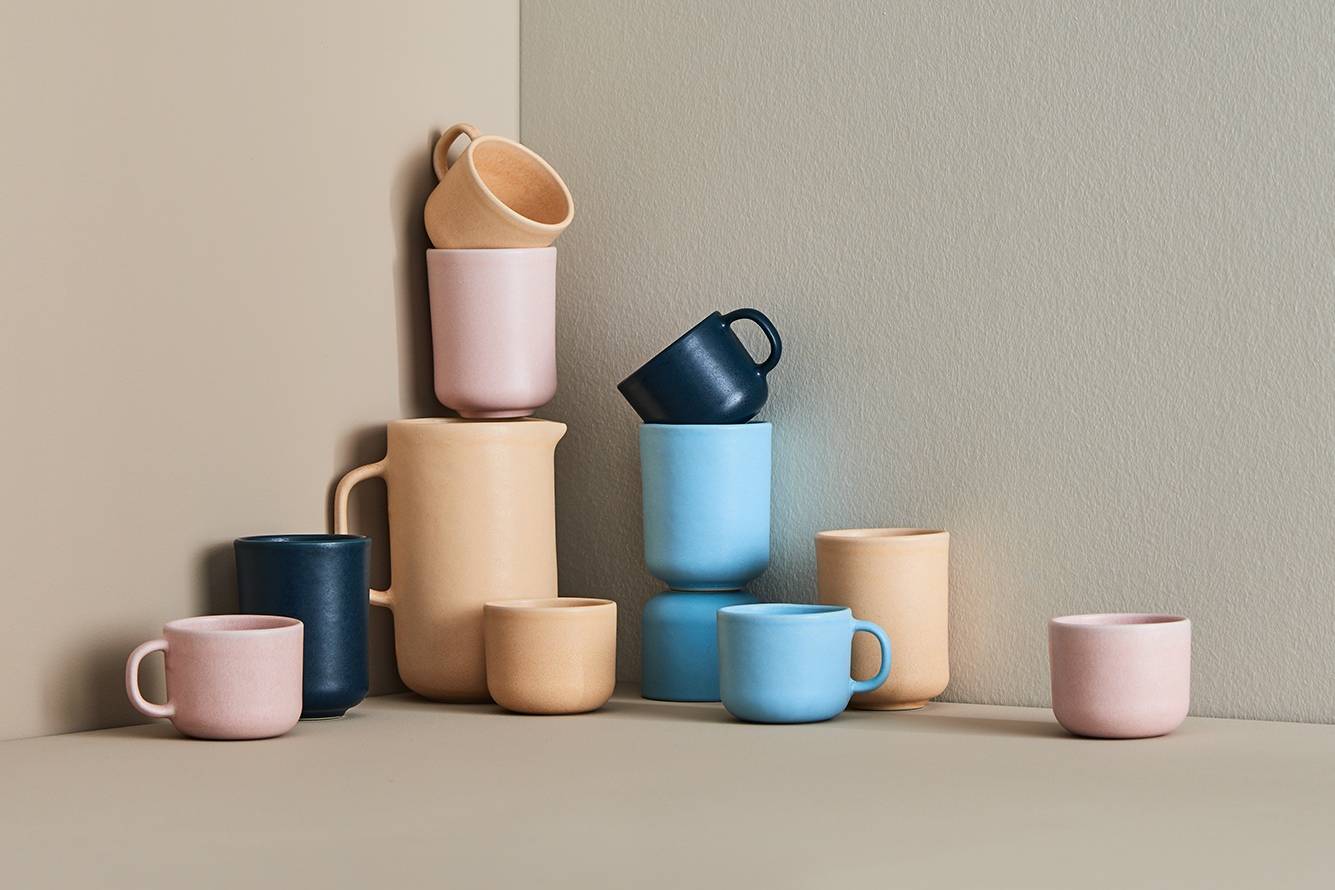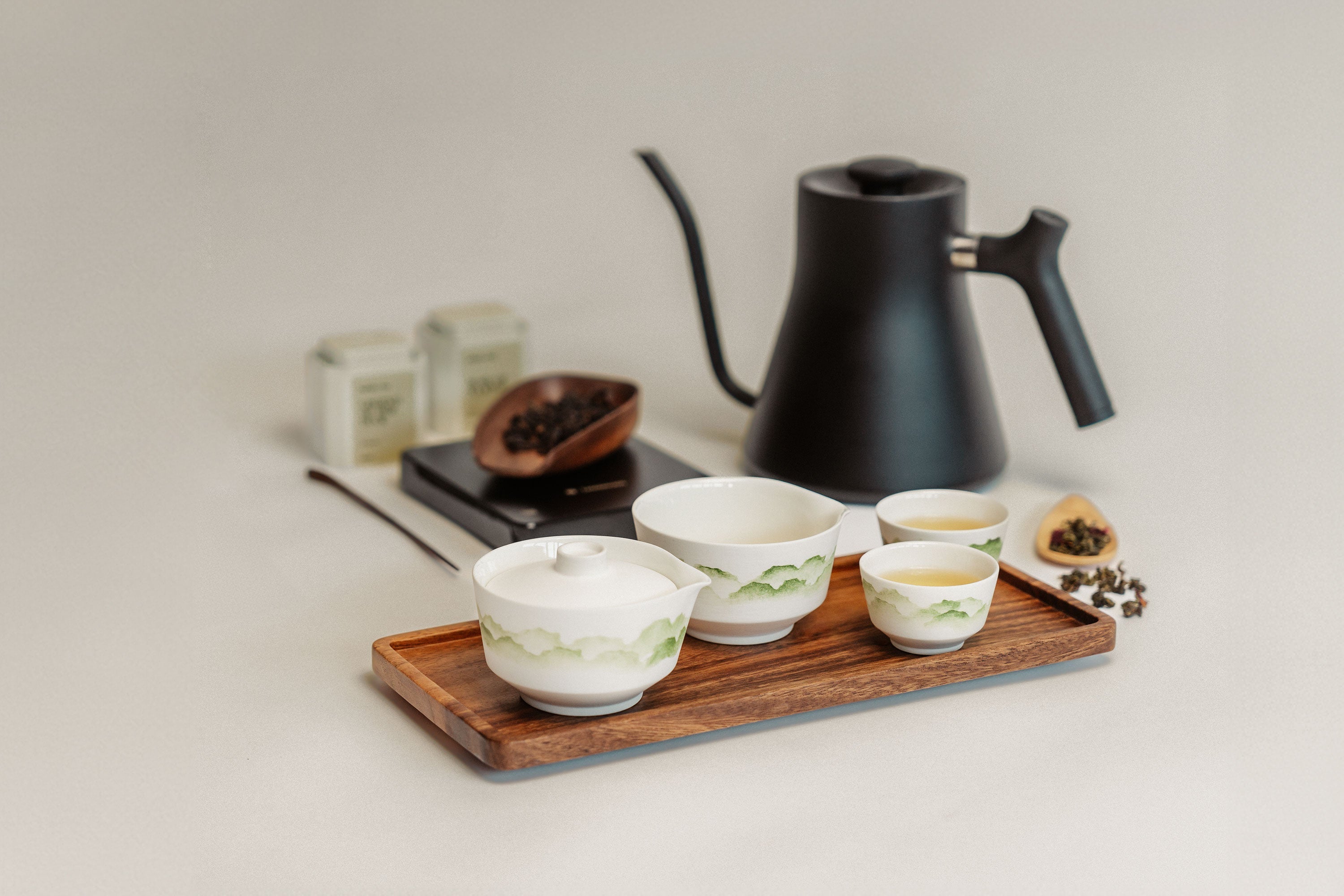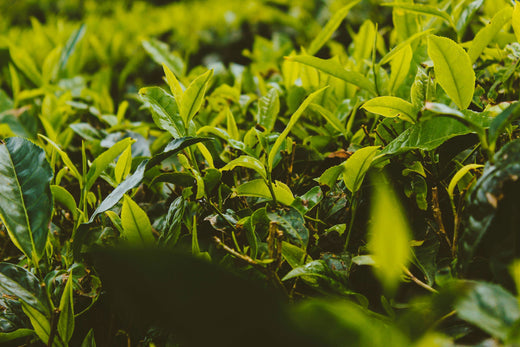Only the youngest buds of the tea plant are used for this variety: White tea is the least processed tea. It is selected, processed, and dried with the utmost care. Minimal craftsmanship that makes a big impact: A gently fragrant cup of white tea guides you through a variety of mild aromas into tea culture. The silvery-white down of the buds gives white tea its name. We'll show you how to find the right white tea for you, how to brew it, and where it's harvested.
The Daily Cup of White Tea
Most of the white tea for our daily tea consumption is grown on the soft hilly landscape of China’s Fujian province. However, there are now also white tea cultivation areas in neighboring Nepal and African countries. Tender buds are hand-plucked in spring and then only minimally oxidized—a few steps that need to be done carefully. With every sip, you can taste this skillful craftsmanship. A cup of white tea offers you a delicate variety with floral, sweet, and fruity notes. What are you waiting for? Let this enchanting ritual of tranquility enrich your daily life.

Finding the Right Moment
During our hectic daily lives, it is essential to create calm moments of balance. Leave the hustle and bustle behind and create conscious moments that belong only to you—preferably with a cup of white tea! Personal tea moments can be created all around the clock. Whether in the morning or in the afternoon, white tea will be your favorite gentle companion, each sip tasting like a wonderful treasure that enriches your life.
Morning Tea Ceremonies
As the day breaks so does the need for a simple morning ritual that provides clarity and comfort. A cup of white tea can be just the right answer with its delicate-sweet scent that can fill the entire room. Let yourself be hugged by warm moments of happiness. Treat yourself to a cup before heading to work or brew a pot of white tea to accompany you through the morning.
Can You Drink White Tea in the Evening?
Once you experience the gentle character of white tea, you will not want to miss it. Tea lovers might ask whether they can also enjoy a cup in the evening. Like all other types of tea, white tea is also made from the leaves of the Camellia Sinensis plant. Hence, it naturally contains caffeine. If you are sensitive to caffeine, it might be better to refrain from drinking tea in the evening. In that case, caffeine-free herbal blends are the better choice before bed. On the other hand, pouring a steaming cup of white tea can also become an evening relaxation ritual. White tea can easily accompany you in the moments when the sun sets behind the mountains and the city lights turn off. Just try and see how your body and mind best come to rest.
The Art of Preparation – Tips for Perfect Tea Enjoyment
To get the best taste from your tea leaves, you can follow some of our tips to give white tea the attention, dedication, and time it deserves. We will show you how to brew the best infusion. First, you need to know that light teas like green tea and white tea should not be infused with boiling hot water. The delicate aromas usually develop at around 80°C. While white teas do not turn bitter as quickly, you should keep an eye on steeping time. For white teas we generally recommend 1 to 3 minutes. You can also find exact instructions on every PAPER & TEA product page and packaging. For the perfect result, we recommend using filtered water to enjoy the full aromatic diversity of white tea.
In China, the cups are first rinsed with hot water to warm them up. This way, the warmth of your tea is preserved longer: an important detail for teas like white tea that are not prepared with boiling water. And why not try a second infusion? Our teas are all so abundant that you can discover new layers of fascinating aromas with another infusion.
On a Journey of Discovery: Buying White Tea
You must be wondering which white tea is right for you. We are here to help you choose the perfect tea. Numerous varieties are waiting to enchant you with their irresistible taste. We introduce you to the backgrounds of our white teas so that you can buy the right tea.
Our Varieties of White Tea
Drink a cup of ancient Chinese tea tradition with our PU ER BAI YA N°103. The tea buds are harvested from wild tea trees in Yunnan, the birthplace of tea.
A light version of Earl Grey is our WHITE EARL N°107: For this tea, we refined Chinese white tea with natural bergamot. The citrus aroma wonderfully complements white tea. With a base of white tea, we have created the fruity tea blend PERFECT DAY N°719, a wonderful cup that smells of apricot, elderflower, and apple.

Another classic from China is the silver needle tea which is now also grown by sophisticated tea pioneers in other regions. Our SILVER SINDANO N°106 comes from the sunny slopes of Mount Kenya in Africa: an exceptional white tea with a fruity-floral character, whose complex infusion will surprise you. From the continent of Africa also comes the unique stem tea LAPANSI ANTLERS N°114. The velvety stems of the tea plant, reminiscent of deer antlers, give the tea its name. These stems are hand-sorted in one of Malawi’s first tea gardens. On the same tea farm, with which PAPER & TEA has a long partnership, the rolled white tea rarity CHIKONDI BEADS N°923 is also produced.
Behind the Scenes: The White Tea Plant
To clear up the biggest myth about tea: There is no single plant for white tea. All types of tea are harvested from the same tea plant, Camellia Sinensis. However, some cultivars are more suitable for one variety of tea than others. Essentially, a leaf from the tea plant can become any kind of tea. For white tea, the most well-known cultivar is Da Bai, which translates from Chinese as “Big White.” The largest tea cultivation for white tea is in the Fujian province of China, but today countries like Kenya, Sri Lanka, and India also produce this delicate specialty. Other factors such as harvest time, climate, and soil conditions play into the taste of your cup of tea.
From Plant to Cup
The type of tea that will develop from the plucked leaves and buds is determined during processing. After the tea harvest, the leaves are carefully processed in meticulous steps. As mentioned before, white tea is the least processed tea. The minimal process is carried out carefully and accurately. The natural tea variety is laid out for wilting and drying until the buds achieve a slight oxidation.
Which is Better, Green Tea or White Tea?
Green tea enjoys great popularity worldwide, immersing one deeply in Far Eastern stories and traditions. Japanese green tea, in particular, sparks enthusiasm among many tea enthusiasts. Green tea is known for its incredible variety of flavors, ranging from creamy-sweet to nutty to grassy-vegetal. White tea, in terms of cultural richness, is in no way inferior to green tea: With one sip, you can enjoy ancient Chinese specialties or explore innovative white teas from new growing areas. White tea feels like a gentle hug and brings a smile to your lips with its delicate sweet notes, like only the finest young tea leaf buds can. In the end, it is all a matter of individual taste. You don’t have to decide either. Explore the multitude of the world of tea and find the perfect cup for every moment.
An Ode to White Tea
The enjoyment of white tea is a moment of peace amid hectic everyday life. But it is so much more than that: It is appreciation for the careful processing in the growing areas and the artistic craftsmanship of knowledgeable tea experts who create these delicious tea specialties for us. It is like a love letter to ancient tea culture and life itself. The infusion of these delicate tea buds takes you on a journey into a fascinating world in which time moves slowly. With each sip of this gently fragrant cup, you dive deeper into an oasis of silence. Have you also become curious to try white tea?
























